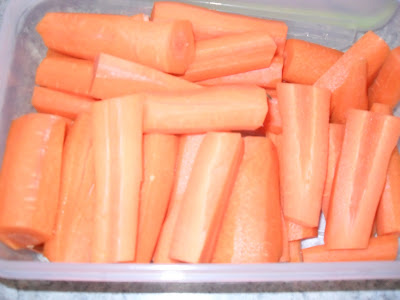"If you need something done, give it to a busy person!"
Ah… how true it is. It does seem the more we have to do, the more we get done.
Of course, it's also easy to let certain things go when you are really busy, such as going to the gym and eating healthy.
So here's the key:
Plan
Prep
Do!
My professor always complains that people say they are either organized, or they are not. She states, "Organized people are organized because they take the time out of their day to get organized," which, in the end, saves time!
So:
- plan what kind of meals you want to make for the week.
- make a shopping list
- go to the grocery store
- at some point soon after going to the grocery store- take the time to prep any of the healthy food that requires effort that might later deter you from eating it.
If you set out to chop/ peel/ prep a bunch of stuff at once it takes much less time than going through the process each time you want to eat something. Plus, think of the time and energy you'll save on washing the knives, vegetable peeler, and cutting board.
I personally go through this process not only because I am busy, but because Jordan is lazy, and I know he will not bother to use vegetables if they are not ready to be used.
Last week at the grocery store I bought a 5 pound bag of carrots for $1.99! but of course, whole carrots require a bit more effort than baby carrots, so I took the time after I went shopping to peel and cut them up.
Along with a bag of green peppers, I cut up a few into strips to be used for whatever my heart desired at the moment. They can always be chopped smaller later on if desired.
It also seems we are more likely to go through fruit in our house if it is cut up and mixed together (in this case, apples, bananas, plums and nectarines are all pretty easy to eat anyway, but I do enjoy the variety. It works even better if there is something that required cutting up such as a melon.
Then finally- once I am all done prepping I stick it all in the fridge in tupperware for easy access and quick meal making throughout the week :)












